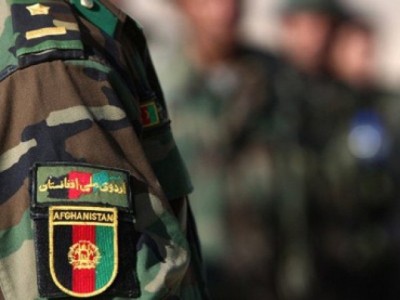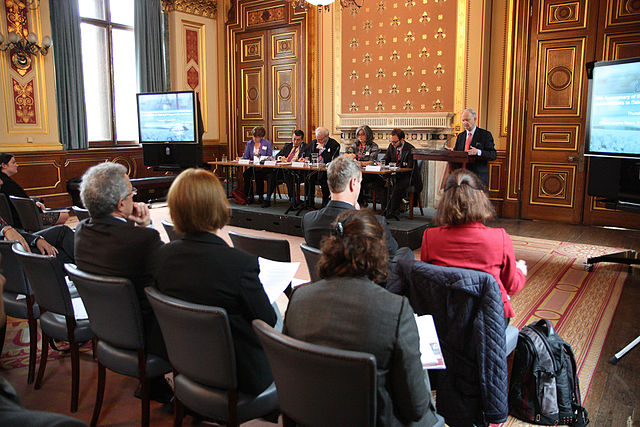On May 17, NATO Secretary General Anders Fogh Rasmussen addressed the North NATO Council and NATO Parliamentary Assembly to highlight the successes of the NATO mission in Afghanistan and discuss the plans for the country’s security once NATO forces depart in 2014. He stated that the ISAF role undertaken by the 28 NATO members, along with 22 participating nations, would transform from active fighting against the Taliban to the training and guiding of Afghanistan’s military, police, and special- forces. Rasmussen’s rap sheet of statistics is impressive. In 13 years, Afghanistan has transformed from one of the world’s most authoritarian states to one that has encouraging signs of development and economic opportunities. There is a bustling atmosphere on the crowded streets of Kabul as shopkeepers and frenetic entrepreneurs relish the economic expansion.
[captionpix align=”right” theme=”elegant” width=”300″ imgsrc=”http://natoassociation.ca/wp-content/uploads/2013/05/andersfoghrasmussenmay17.png” captiontext=”Secretary General Anders Fogh Rasmussen addressing the North NATO Council and NATO Parliamentary Assembly on May 17. “]
Under the Taliban rule, the country survived on 49 kilometres of paved roads. That number has soared to over 32,000 kilometres. While 70% of Afghans talk and text each other on mobile phones, the country’s economy has heated to a GDP of over 7% per year. Millions of children now receive state-funded education, an improvement that has contributed to what a UN report has described as South Asia’s fastest growing human development. All of these hard – won gains come at the cost of a protracted guerilla war where networks of drug lords and Taliban fundamentalists continue to fight NATO and Afghan forces mostly in the mountainous regions. Securing Afghanistan’s optimistic future depends on the competency and effectiveness of its security forces, which for years have followed their foreign NATO guides. Canadians ought to be concerned about Afghanistan’s security future, because a secure Afghanistan is one less area where Canada’s enemies can roost.
The Defence Ministers of NATO’s member states await a meeting on June 5th to discuss and approve the character of the post-2014 mission. While the Afghan security force numbers 350,000 and is ten times the size of their Taliban enemies, questions remain as to the ability of the force to get the job done. The security forces lack sophisticated weaponry as their arsenal consists largely of Cold War equipment. Kabul’s top policeman General Mohammed Ayub Salangi admits that his police officers need better equipment to combat crime and seasoned militants. Afghanistan’s Special Forces are receiving patient direction from their U.S. counterparts, but vast differences in the education and skills of potential recruits hamper the quality of combatant required. Still, as Rasmussen’s address continuously underscored, the main security challenge is not lacklustre soldiers, but failing institutions, including a government susceptible to rule-of-law violations and the revolving doors of corruption. President Hamid Karzai will need to ensure that government services are effectively delivered to citizens to create a legitimate government and neutralize any hostile aspirations of gullible youth recruited by the Taliban.
The American interpretations of Afghanistan post-2014 may be more perceptive. Lt. General Nick Carter, the deputy ISAF commander, is calling Afghanistan’s future a “stable instability.” He highlighted that several regions of the country operate in semi-autonomous circumstances, but also stressed that the Taliban could not take over the country. The scenario playing out in Afghanistan is akin to other developing conflict regions, such as Mali and the Democratic Republic of the Congo, where drug lords or tribal leaders pursue their own interests while occasionally delivering haphazard services, protection, or money to people in their areas of influence.
A more interesting discussion over U.S. troop commitments is taking place between Presidents Obama and Hamid Karzai. Obama is committed to withdrawing the remaining 63,000 troops by the end of next year, but a force of 5,000 to 10,000 troops could operate on as many as nine U.S. military bases throughout the country. The U.S. is keen to finalize its plans, while other NATO countries appear more reluctant. Only Germany has officially committed to sending 800 troops after 2014. Nevertheless, the Defence Ministers’ meeting on June 5 will be an important event for Afghanistan’s future. Canadians should pay careful attention.




